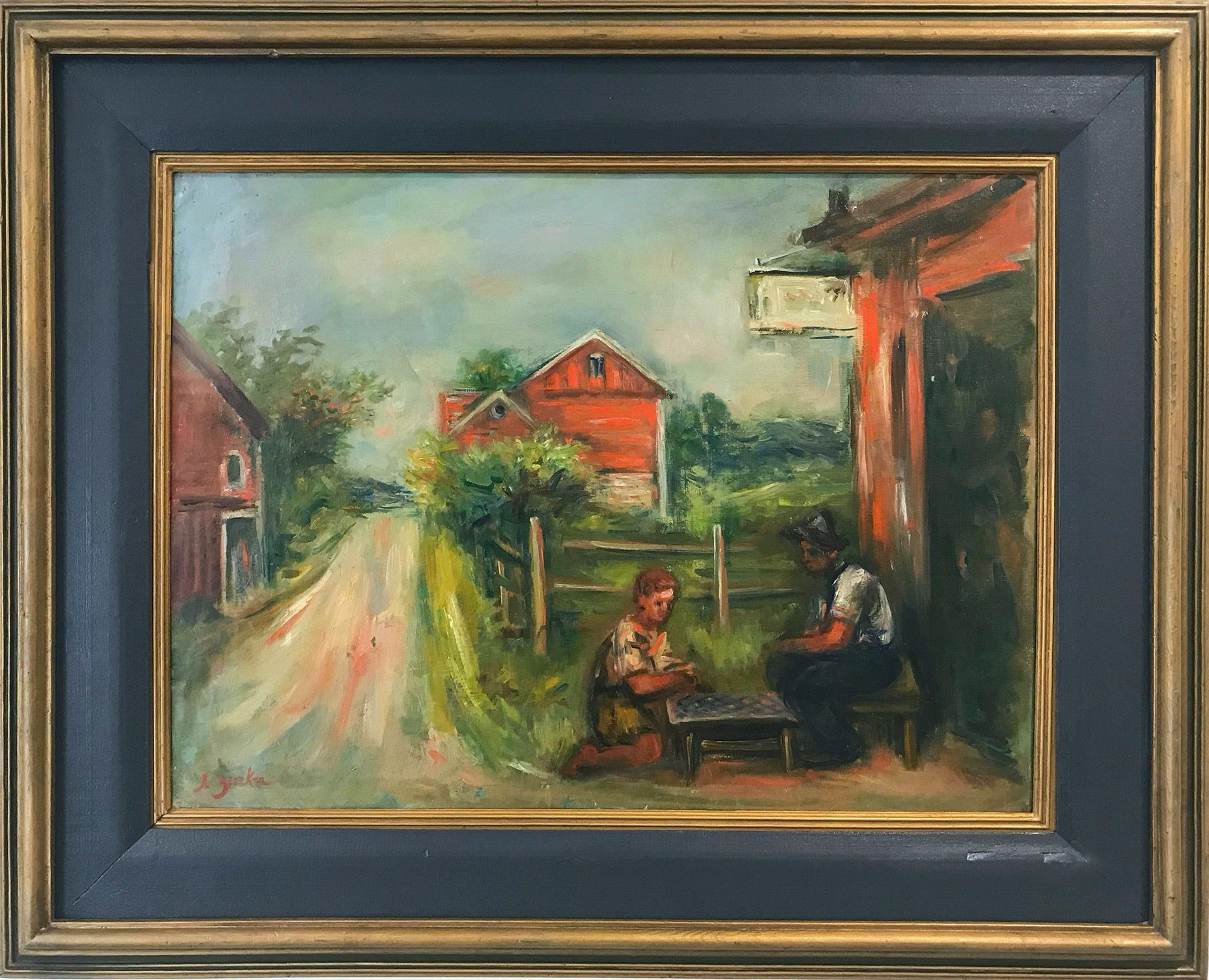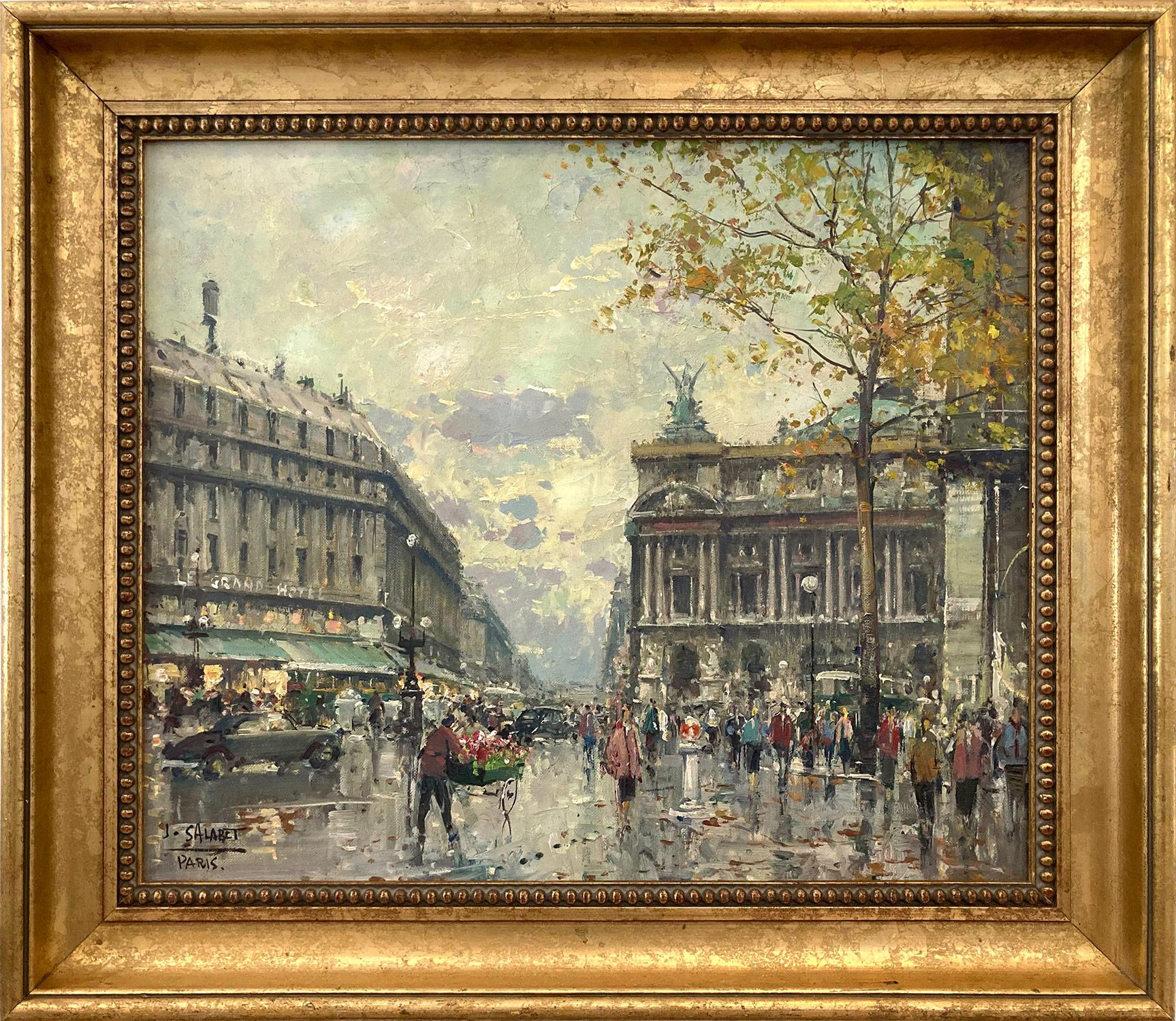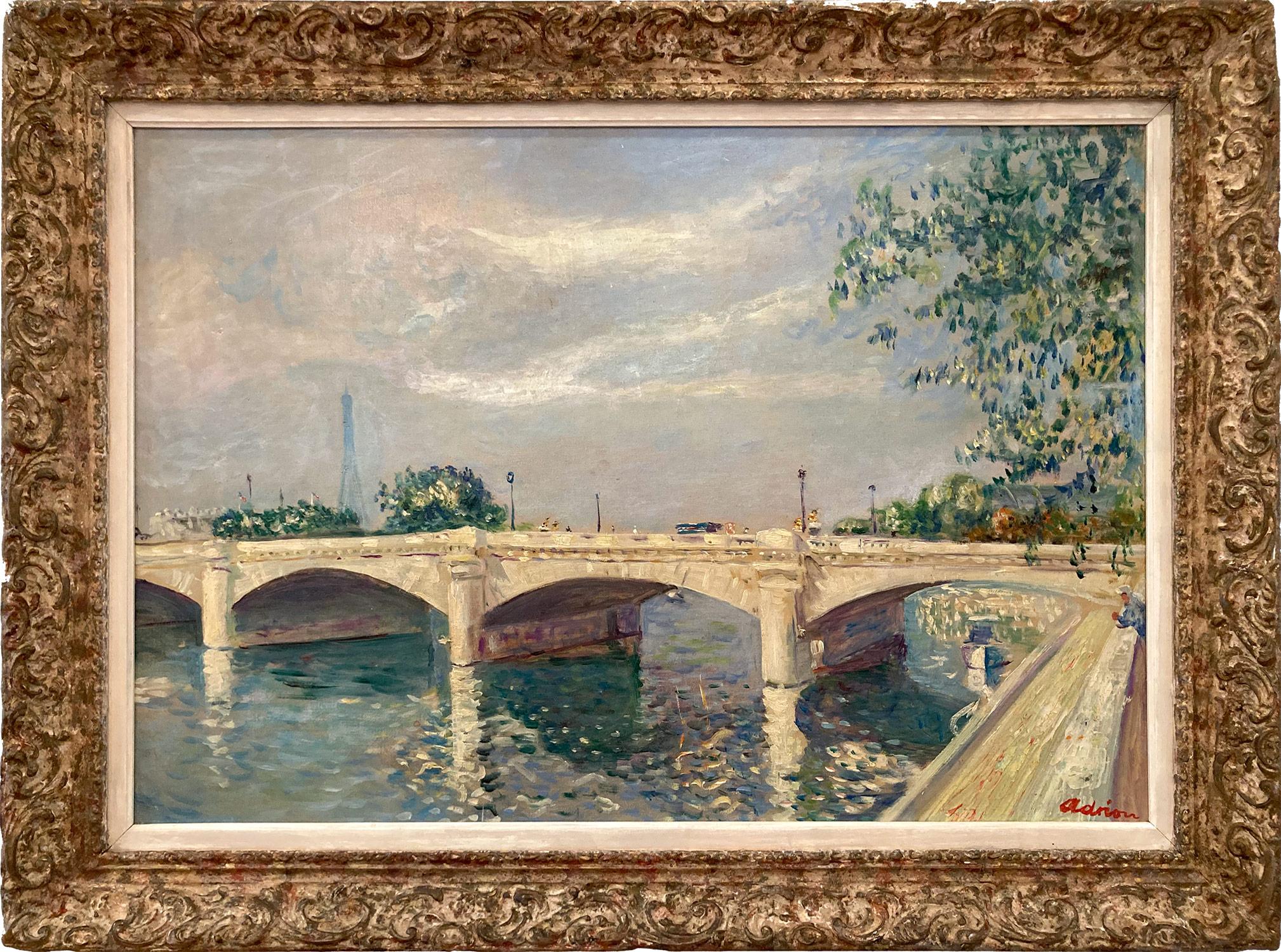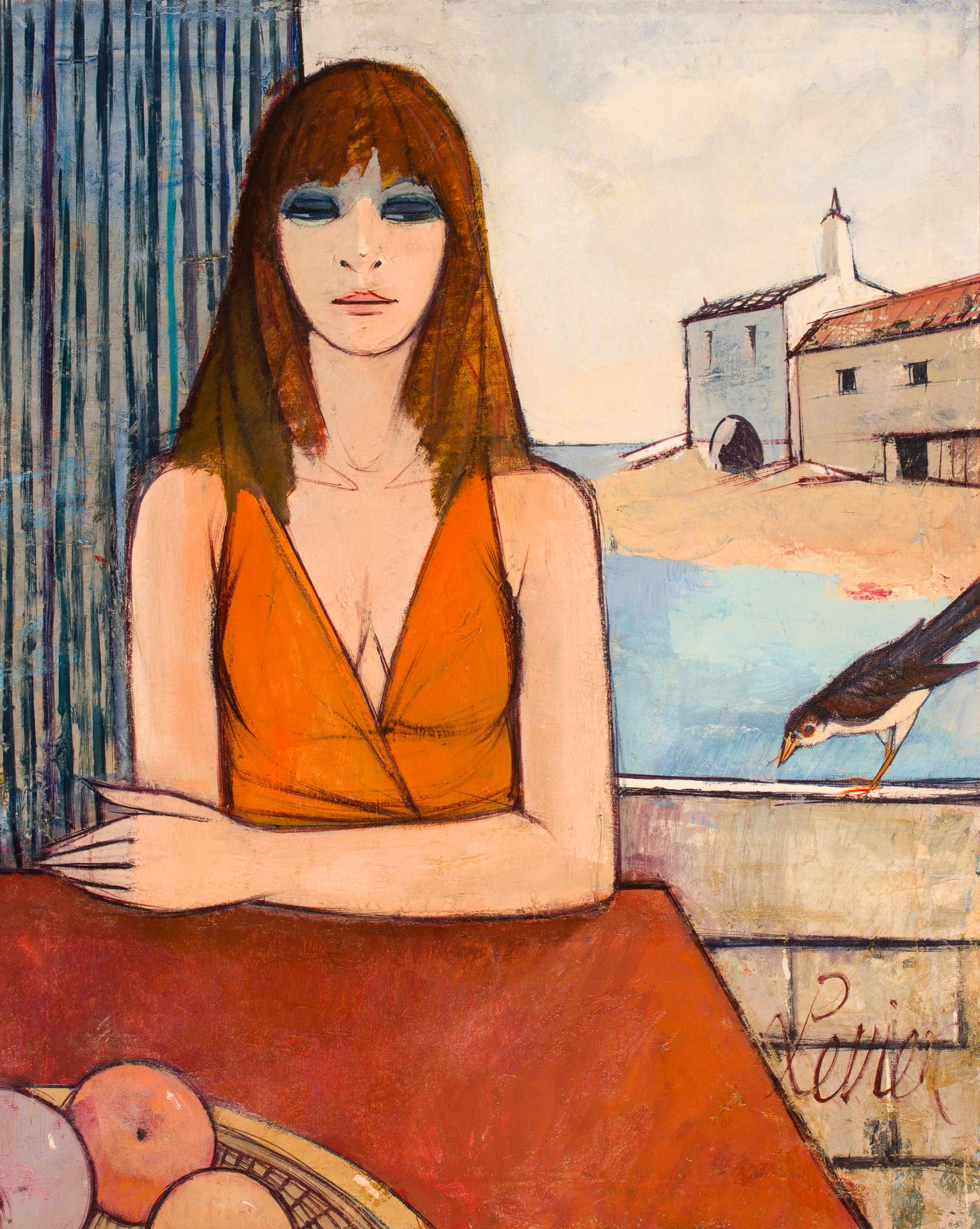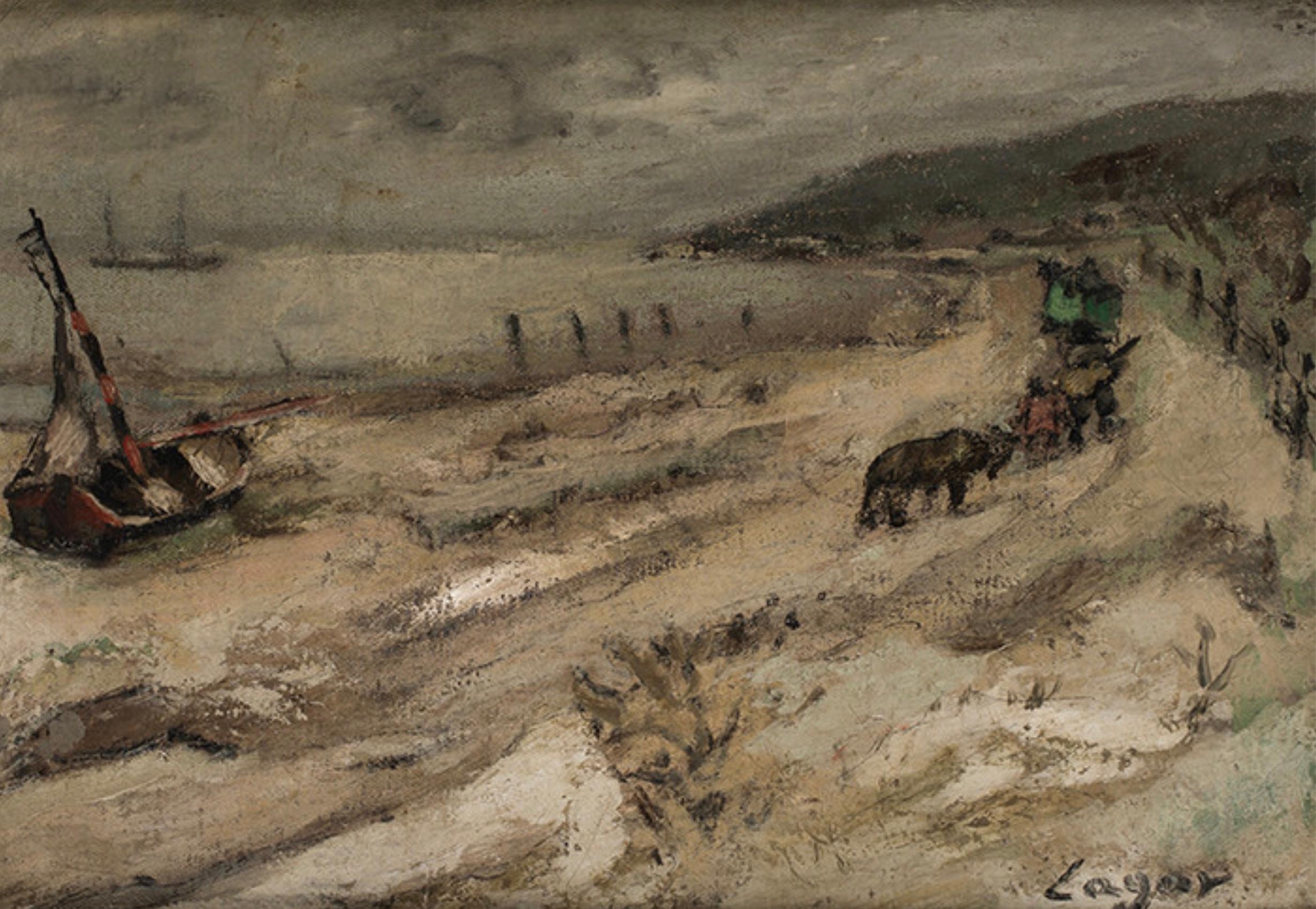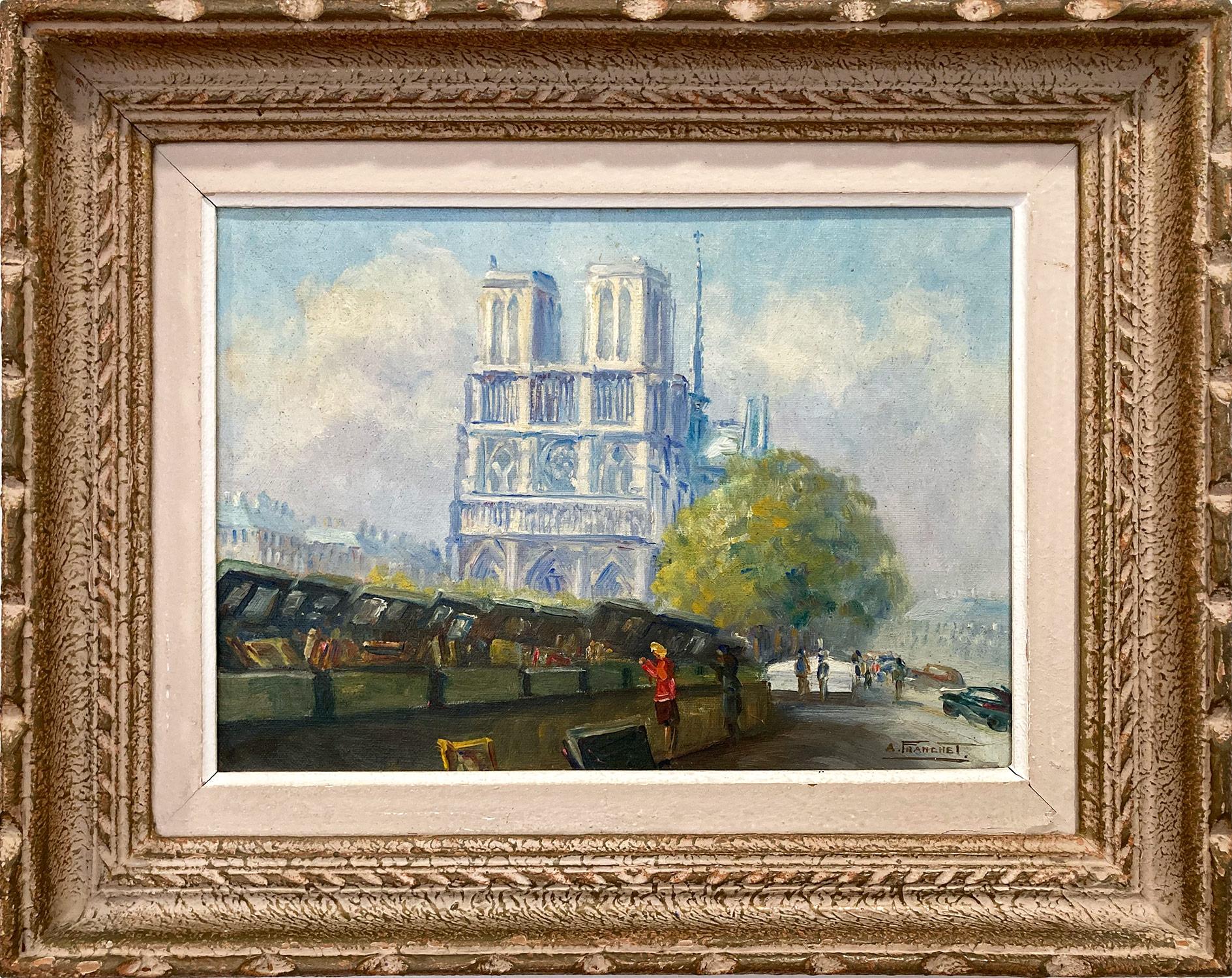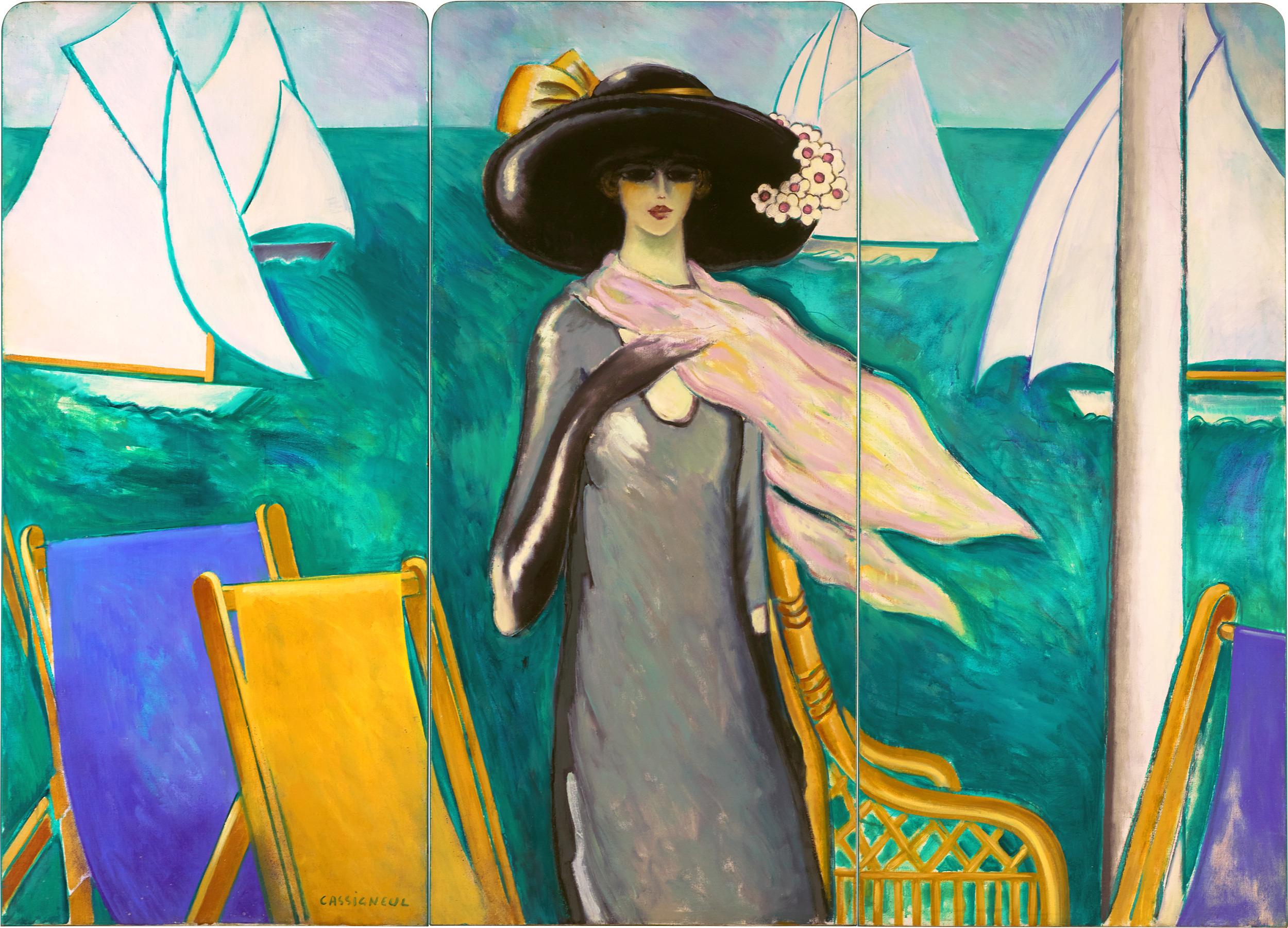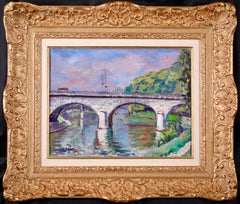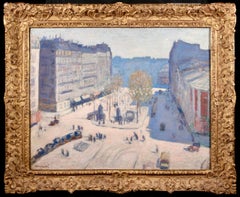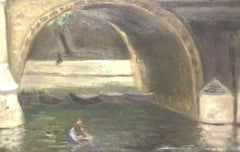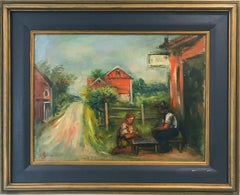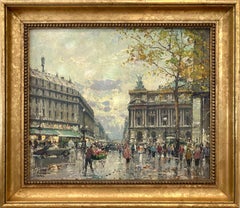
Pont de l'Alma - Post Impressionist Oil, River in Cityscape by Marcel Dyf
Want more images or videos?
Request additional images or videos from the seller
1 of 15
Marcel DyfPont de l'Alma - Post Impressionist Oil, River in Cityscape by Marcel Dyfc.1940
c.1940
About the Item
- Creator:Marcel Dyf (1899-1985, French)
- Creation Year:c.1940
- Dimensions:Height: 15 in (38.1 cm)Width: 18 in (45.72 cm)
- Medium:
- Movement & Style:
- Period:
- Framing:Framing Options Available
- Condition:Very good original condition.
- Gallery Location:Marlow, GB
- Reference Number:Seller: LFA01581stDibs: LU41536804732
About the Seller
5.0
Platinum Seller
These expertly vetted sellers are 1stDibs' most experienced sellers and are rated highest by our customers.
Established in 2001
1stDibs seller since 2016
Typical response time: 3 hours
More From This SellerView All
- Le Pont de Charenton - Post Impressionist Landscape Oil by Nathan GrunsweighLocated in Marlow, BuckinghamshireSigned post impressionist oil on canvas riverscape circa 1920 but Polish painter Nathan Grunsweigh. The work depicts a view of the bridge over the River Seine in Paris. A beautifully...Category
1920s Post-Impressionist Landscape Paintings
MaterialsCanvas, Oil
- Boulevard De Clichy - Post Impressionist City Landscape Painting by Albert AndreBy Albert AndreLocated in Marlow, BuckinghamshireSigned and titled figures in cityscape oil on canvas circa 1920 by post impressionist painter Albert Andre. This stunning and good-sized work depicts a view of the Boulevard de Clichy, a famous street in the city of Paris, France on what appears to be a sunny but cool day. Signature: Signed lower left and titled & dated on original label verso Dimensions: Framed: 29"x35" Unframed: 22"x28" Provenance: New York, Durand-Ruel, Exhibition of Paintings by Albert André, 1 February -18 February, 1921 He came to Paris in 1889 as an industrial designer. At the age of 23 he enrolled at the studio of William Bouguereau at the Académie Julian, where he met Ranson, Louis Valtat and the young poet and dramatist Henry Bataille, who at the time was training as a painter. He illustrated L'étang de Berre by Charles Maurras and Les Petites Alliées by Claude Farrère. He produced cartoons for tapestries...Category
1920s Post-Impressionist Landscape Paintings
MaterialsCanvas, Oil
- Stormy Weather - Honfleur - Post Impressionist Oil, Seascape by H de Saint-DelisLocated in Marlow, BuckinghamshireA wonderful oil on canvas circa 1908 by French post impressionist painter Henri Liénard de Saint-Délis depicting a boat docked at the harbour in the harb...Category
Early 1900s Post-Impressionist Landscape Paintings
MaterialsCanvas, Oil
- Boulevard Haussmann - Post Impressionist Painting by Antoine BlanchardBy Antoine BlanchardLocated in Marlow, BuckinghamshireOil on canvas figures in cityscape circa 1970 by French post impressionist painter Antoine Blanchard. The work depicts a bustling scene at the Boulevard Haussmann in Paris, France. Lights illuminate the shopfronts and the street lights as people walk along the paths in their coats and horse drawn carts pass along the cobbled street. Signature: Signed lower right and stamped with artist's cachet verso Dimensions: Framed: 27.00" x 29.00" (68.6cm x 73.7cm) Unframed: 18.00" x 22.00" (45.7cm x 55.9cm) Provenance: The Boydell Galleries - Liverpool Antoine Blanchard trained at the École de Beaux-Arts in Rennes for three years. Then from 1932 attended the École de Beaux-Arts in Paris for four years. He painted exclusively Parisian street scenes in which the view is of an idyllic Paris in any season, but always in 1900. Blanchard received his initial artistic training at the Beaux-Arts in Rennes, Brittany. He then moved to Paris in 1932 where he joined the Ecole des Beaux-Arts. He won the Prix de Rome. Like Edouard Cortes (1882–1969) and Eugène Galien-Laloue (1854–1941), Antoine Blanchard essentially painted Paris and the Parisians in bygone days, often from vintage postcards. The artist began painting his Paris street scenes in the late 1950s. And like Cortès, often painted the same Paris landmark many times, in different weather conditions or various seasons. The most recurrent topics were views of the capital city on cloudy or rainy days. Showing streets busy with pedestrians in a rush to go home, and bright storefronts reflecting on wet streets. Many of the French Quarter art...Category
1970s Post-Impressionist Figurative Paintings
MaterialsCanvas, Oil
- The Harvesters - Post Impressionist Figures in Landscape Oil by Charles FrechonLocated in Marlow, BuckinghamshireSigned figures in landscape oil on canvas by French post impressionist painter Charles Frechon. The work depicts two woman harvesting a field on a sunny summer's day. One woman is resting against a hay bale. Signature: Signed lower left Dimensions: Framed: 27"x31" Unframed: 20"x24" Provenance: Private collection - Rouen Charles Fréchon joined the Académie de Peinture et de Dessin in Rouen in 1879 and met Joseph Delattre and Charles Angrand. He then went to Paris and in 1881 enrolled at the Académie Colarossi. When he returned to Rouen he painted mainly from life.Fréchon painted landscapes in an Impressionist style and was one of the instigators of the so-called School of Rouen. The School took its name from the fact that painters such as Joseph Delattre, Léon Jules Lemaître...Category
Early 1900s Post-Impressionist Landscape Paintings
MaterialsOil, Canvas
- Bathers on the Beach - Post Impressionist Landscape by Jacques-Emile BlancheBy Jacques Emile BlancheLocated in Marlow, BuckinghamshireSigned post impressionist oil on canvas landscape by French painter Jacques-Emile Blanche. The work depicts crowds of people enjoying a day at Brighton beach on the south coast of England. Bathers are dotted across the sandy beach with the pier on the right hand of the scene and the Grand Hotel behind. Signature: Signed lower right Dimensions: Framed: 29.5"x47.5" Unframed: 22.5"x39.5" Provenance: Private collection - Italy This work will be included in the catalogue raisonne of the work of Jacques Emile Blanche currently under preparation by Dr Jane Roberts & Muriel Molines Blanche received training from Gervex and Fernand Humbert. His grandfather was Émile Antoine Blanche, the psychiatrist who treated the poet Gérard de Nerval on several occasions. He was awarded a gold medal at the Exposition Universelle in Paris in 1900, and was a Commander of the Légion d'Honneur. He was well known in French and British artistic circles, and married the daughter of John Lemoine, the leader of the Diary of the Proceedings ( Journal des Débats), and author of the Life of Brummel. He exhibited his works in London and Paris. Blanche had a wide circle of acquaintances, and the list of portraits which he executed is indicative of the diversity of those who used to meet at his home: Henri Bergson; Stéphane Mallarmé; Henry Bernstein (1902); André Gide (1912); Anna de Noailles (1912); Jean Cocteau (1912); Igor Stravinsky (1915); Francis Jammes (1917); Paul Claudel (1919); Jean Giraudoux; Paul Valéry; Marcel Proust; Max Jacob (1921); Maeterlinck (1931); Debussy; Antoine Bourdelle; George Moore; André Maurois; François Mauriac; Maréchal Foch and the Princess de Broglie. He also wrote novels, which were more or less autobiographical, and essays, such as From David to Degas; Dates; From Gauguin to the Negro Review; Journals of an Artist ( De David à Degas; Dates; De Gauguin à la Revue nègre; Cahiers d'un artiste) in six volumes, and Manet. During meetings at his studio, he used to collect any snippets that would flesh out the essays he wrote, which alternated between being sharp and emotive. He gave them in series to the magazine Comoedia, under the title of Studio Talk. It was said that he aroused tremendous debate, notably with André Lhote, a painter younger than himself, who also doubled as a critic. The latter initially attempted to define the main characteristics of the art of the 'rebellious and charming Jacques Émile Blanche,' but subsequently treated him less generously, referring to a painter 'attached to the notion of 'high-and-mighty' genre painting.' He added that this sort of painting was marvellously illustrated by Manet. The quality of his flat surfaces, the precious greys and silvery light effects cause Jacques Émile Blanche to be compared more with Manet, whom he admired, than with the Impressionists, with whom he was compared in terms of his early works. Nevertheless, his outdoor backgrounds with traces of sometimes vivid colours have something in common with them. In the aftermath of World War I, he spent a long time on an enormous composition entitled Tribute to those who Died in the War. It was executed in a style which was totally different to his work as a whole. He offered this work to the church in Offranville near Dieppe. He also donated around 100 of his works to the Musée des Beaux-Arts in Rouen. He regularly exhibited in Paris, at the Salon of the Société Nationale des Beaux-Arts (also known as the Salon de Mars) from the time it was founded in 1890. At the time of the initial exhibitions held by the Société Nationale des Beaux-Arts, he rapidly gained fame by exhibiting such portraits as Paul Adam and Charles Cottet...Category
Mid-20th Century Post-Impressionist Landscape Paintings
MaterialsCanvas, Oil
You May Also Like
- Boating on the River Seine Paris underneath Stone Bridge Signed French OilBy Bertrand Mogniat-DuclosLocated in Cirencester, Gloucestershire"Under the Bridge" by Bertrand Mogniat-Duclos (French 1903-1987) signed oil painting on board, framed painting: 9.5 x 14 inches framed: 13.5 x 18 inches A very beautiful French Pos...Category
Mid-20th Century Post-Impressionist Landscape Paintings
MaterialsCanvas, Oil
- "Playing Checkers" Post-Impressionist of a Mexican Village Oil Painting on BoardBy Jacques ZuckerLocated in New York, NYThis painting depicts a whimsical townscape of a Mexican village with a couple playing checkers near the road. The bright colors and quick brush strokes are what makes this painting ...Category
20th Century Post-Impressionist Landscape Paintings
MaterialsOil, Canvas
- "Place de l'Opéra" Post-Impressionist Parisian Street Scene Oil Painting CanvasBy Jean SalabetLocated in New York, NYA beautiful oil on canvas painting by the French artist, Jean Salabet. Salabet was a Parisian painter known for his colorful cityscapes depicting the times of his generation. His wor...Category
20th Century Post-Impressionist Landscape Paintings
MaterialsCanvas, Oil
- "Pont De La Concorde" Post-Impressionist Oil Painting Across the Seine in ParisBy Lucien AdrionLocated in New York, NYThis work by Lucien Adrion is a wonderful representation of his impressionistic works depicting the "Pont De La Concorde" bridge across the Seine in Paris with the Eiffel tower in th...Category
Early 20th Century Post-Impressionist Landscape Paintings
MaterialsCanvas, Oil
- "Le Pantheon - Paris, 1905", Edouard Cortes, 13x18, Oil on Canvas, ImpressionismLocated in Dallas, TXVaudeville Theatre by Edouard Cortes was painted circa 1955-60 and signed lower left. It is oil on canvas measuring 13x18 in original unlined condition. The piece is included in the ...Category
1950s Post-Impressionist Landscape Paintings
MaterialsCanvas, Oil
- "Theatre de Sara Barnhardt", Edouard Cortes, 13x18, Oil on Canvas, ImpressionismLocated in Dallas, TXTheatre de Sara Bernhart et Place de Chatelet by Edouard Cortes was painted circa 1935-40 and signed lower right. It is an oil on canvas measuring 13x18...Category
1930s Post-Impressionist Landscape Paintings
MaterialsCanvas, Oil

